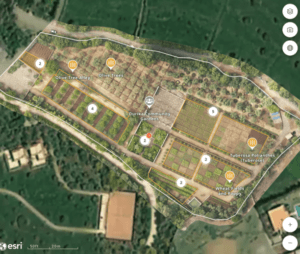
GLOBHE is the impact tech company behind the crowd-droning concept and the largest album of drone-collected images in the world. With a network of local drone operators in more than 130 countries, GLOBHE enables stakeholders from anywhere to monitor and understand places and projects around the world.
For nature-based carbon offset projects, that monitoring offers tremendous value. Companies can not only see – and demonstrate to stakeholders – that their programs have been executed, with drone-based Lidar they can also more accurately calculate the actual impact of the project.
Yambot Aguilera is GLOBHE’s lead for Sales Development and Client Delivery responsible for forestry and environmental projects. He’s passionate about the positive environmental impact that carbon offset projects can have, and the benefits of high resolution monitoring.
“Nature-based solution projects are very valuable,” Aguilera explains. “While they are located all over the world, larger projects are often placed in Africa or Latin America where land management and execution are less expensive, which lowers the price per ton of carbon sequestration.”
Because many of the projects are located on a different continent from sponsors, tracking development can be a challenge. GLOBHE’s network of local operators allows companies to see the projects, ensuring that the design is executed as planned and funded. With engaging and high quality data, companies can understand their own projects in context and detail. Stakeholders can see new plantings in contrast to the surrounding areas, identify trees planted, and see their projects grow.
“While you can monitor with satellite images, it can take years for a forest to grow sufficiently to be captured on satellite,” Aguilera points out. “With the orthomosaic that we overlay on satellite images, you can really see the project come to life.”
The 360 panorama get down to 2.5 cm accuracy, and can show how a particular tree grows,” says Aguilera. “By looking at the surrounding area, companies can see that here is where the reforestation money is going – and here is where it is not. You can compare to what is next to it.”
Calculating Carbon Sequestration
Beyond simply monitoring development, calculating the impact of carbon offset projects is challenging. Certification reporting can be biased and inaccurate. Lidar data can provide the tools to more accurately calculate how much carbon is sequestered, without the assumptions required using satellite data. Here again, the drone data allows companies to see results much earlier, before trees are visible on satellite images, Aguilera says. “New forests sequestrate carbon – maybe not as much as old forests, but they do.”
The GLOBHE system is not only effective, but their network approach makes it easy for clients to access remote projects. “The process is really smooth,” says Aguilera. “Many clients have projects all over the world: Brazil, Africa, Mexico, Europe. Working with us, they can cover all of those countries with one contact.”
Aguilera says he’s proud of the work that GLOBHE is doing in the carbon offset market. “You can be so invested in looking at your computer, you can sometimes forget your impact in the real world,”Aguilera says. “But from my computer, I can protect an area thousands of kilometers away.”
“We are at the crucial point in human history with climate change and geopolitical turbulence,” says Aguilera. “We are at a turning point – and we’re able to do our part to help. I’m proud of being able to work for a private startup that is making an impact.”
You can explore the YSL project shown in the image above here on Explorer.Land.
Read more:
- GLOBHE: The Impact Tech Company Capturing Drone Data in Every Corner of the World
- The GLOBHE World Record for Largest Album of Drone-Collected Images: the Crowd-Droning Concept
- Drones in Telecom: GLOBHE Signs Global Agreement
- Swedish Company GLOBHE is Focused on Drones doing Good in Hard Hit Relief Areas
- 8 Women in the Swiss Drone Industry Open Up About Diversity: How Far We’ve Come, How Far to Go

Miriam McNabb is the Editor-in-Chief of DRONELIFE and CEO of JobForDrones, a professional drone services marketplace, and a fascinated observer of the emerging drone industry and the regulatory environment for drones. Miriam has penned over 3,000 articles focused on the commercial drone space and is an international speaker and recognized figure in the industry. Miriam has a degree from the University of Chicago and over 20 years of experience in high tech sales and marketing for new technologies.
For drone industry consulting or writing, Email Miriam.
TWITTER:@spaldingbarker
Subscribe to DroneLife here.







[…] GLOBHE on Monitoring Carbon Offset Projects Around the World […]